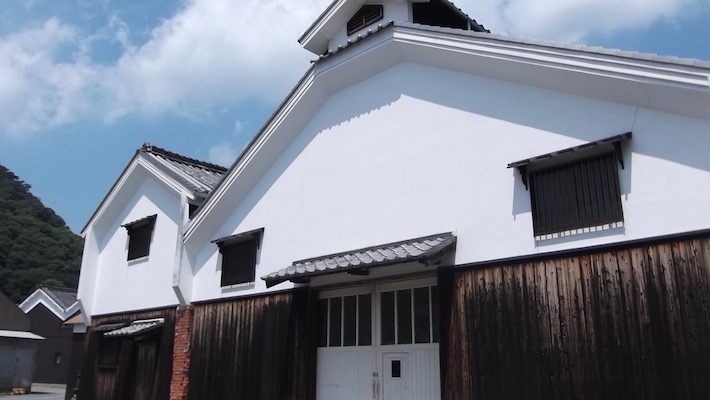
Harima Archives
2022.03.18 The Birthplace of Soy Sauce

Birthplace and Formerly Best in Japan
Usukuchi (light-colored) soy sauce, which is essential to the households of the Kansai region, was born in Harima, which is also the most extensive production area in Japan. The origin of usukuchi soy sauce is Maruo Magoemon, who abandoned his position as a samurai to become a merchant in Tatsuno-cho (currently Tatsuno City) and started brewing and selling sake and soy sauce under the trade name of Maruo in 1587.
Usukuchi Soy Sauce and Amazake
Tatsuno had initially been a sake-brewing area. However, the sake-brewing business was fading because the water in the area was soft and didn’t have the hardness necessary for the sake due to the lack of inorganic nutrients for the yeast. However, Tatsuno’s low-iron water turned out to be ideal for brewing usukuchi soy sauce. Furthermore, Tatsuno turned into a soy sauce-producing area because it was easy to hold high-quality soybeans and salt. Amazake was used for the usukuchi soy sauce of Tatsuno, and this brewing method is said to have been developed during the Kambun era (1661–1673). However, because sake-brewing had been a robust industry before that, the origins of amazake may be even older.
A Spreading Soy Sauce Culture
Tatsuno soy sauce was later developed under the careful protection of Tatsuno Province. Records show that soy sauce sent from Tatsuno Province to Edo increased every year from 112 koku (about 20,204 liters) in 1724 to 162 koku (about 29,223 liters) in just six years. Maruoya records show that soy sauce was first shipped to Kyoto in the Genbun era (1736–1741). It was transported by boats on Ibogawa. Blessed with transportation routes from Aboshi Port to the major markets of Kyoto and Osaka, the industry flourished. An usukuchi soy sauce culture was formed centered around the modern Kinki region. Several soy sauce manufacturers are still scattered around Tatsuno City, known as the Little Kyoto of Harima, and still retains remnants of a castle town.
Making Soy Sauce
The power of microorganisms is vital to the making of high-quality soy sauce. First, carefully selected ingredients such as soybeans, wheat, salt, and rice are roasted or steamed to make it easy for the microorganisms to do their work. The steamed soybeans and cracked wheat are mixed, and bacteria are added to create koji. Saltwater is added to ferment and age six months, creating moromi. The moromi is then pressed to make fresh soy sauce.
The Reason for the Light Color
The lightness of color is an essential element of usukuchi soy sauce. The hint to its importance can be found in the soft and pure water of Ibogawa. Soft water contains very little calcium, magnesium, and iron. It has the characteristic of not coloring soy sauce too much. It also allows the umami of stock to seep out better, making it ideal for simmered dishes, etc. Delicate handling is required for fine adjusting temperature and cares not to let the soy sauce come into contact with enzymes, and it cannot be left up to machines.



